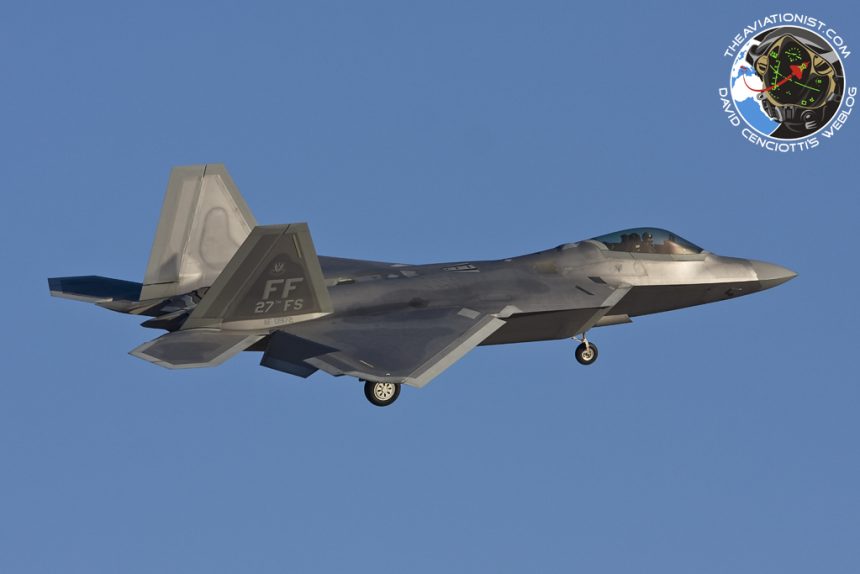In the night of Sept. 23, the U.S. and partner nations have launched a series of air strikes against ISIS targets in Syria. And, for the first time ever, the F-22 Raptor has had its baptism of fire.
U.S. Air Force F-22 Raptor jets were involved in the opening wave of the air campaign the U.S. and some partner nations launched in Syria against ISIS.
Even though the extent of their involvement was not disclosed, considered the scenario it is quite likely the Raptor stealth multi-role jets flew Swing Role missions: by exploiting their radar-evading capability, the F-22s probably flew high and fast to provide cover to the rest of the strike package during the ingress into the enemy airspace (in what is considered a typical OCA – Offensive Counter Air mission), then dropped their Precision Guided Munitions (PGMs) on designated targets, and escorted the package again during the egress and subsequent return to base.
Tasked for air-to-ground configuration, the F-22 can carry two 1,000-lb GBU-32 Joint Direct Attack Munitions, along with AIM-120s AMRAAMs (Advanced Medium Range Air-to-Air Missiles) radar-guided missiles and AIM-9 Sidewinder IR-guided missiles.
With software increment 3.1 or higher, the F-22 can also drop 8 GBU-39 small diameter bombs, 250-lb multipurpose, insensitive, penetrating, blast-fragmentation warhead for stationary targets, equipped with deployable wings for extended standoff range. These bombs are particularly useful to improve accuracy and reduce collateral damage.
The aircraft involved in the raids that marked the baptism of fire of the Raptor fleet were probably the six F-22 Block 35 jets with the 1st Fighter Wing from Joint Base Langley–Eustis, Virginia, that, as we reported, deployed to Al Dhafra, in the UAE, in April 2014.
Indeed, the aircraft with the typical “FF” tail code were spotted in the images released by the DoD which showed some F-22s during mid-air refueling over the Persian Gulf in May. What we don’t know yet, is whether the initial detachment of six planes was joined by more planes due to the crisis.
Interestingly, in an interview given at the end of 2013, General Hawk Carlisle said 5th generation aircraft would provide forward target identification for strike missiles launched from a surface warship or submerged submarine, in the future. The PACAF commander described the ability of the F-22s, described as “electronic warfare enabled sensor-rich aircraft,” to provide forward targeting through their sensors for submarine based T-LAMS (cruise missiles). Although it’s quite unlikely that the U.S. Air Force has already implemented this capability, it’s not completely impossible that the aircraft were involved in a similar mission on Sept. 23, designating targets for T-LAMs launched by USS Arleigh Burke and USS Philippine Sea.
















